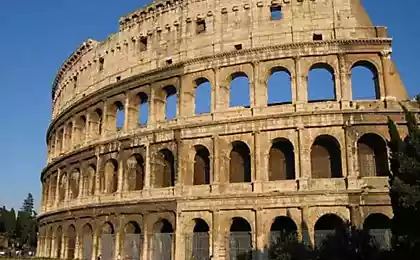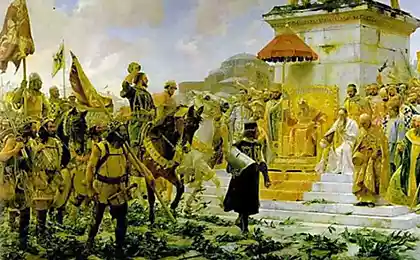354
Turkey will explore the amphitheatre from Roman times

Building found on the territory of Izmir (ancient Smyrna). I believe that it is in this amphitheatre could be killed by the Holy Polycarp.
In Izmir, Kadifekale district (Turkey), opened the remains of the amphitheatre from Roman times. In its place was a slum area. Now most of the buildings confiscated by local authorities continued their demolition.
In order to explore the amphitheater, the municipality confiscated the building with a total area of 12.9 thousand square meters. Archaeologists will begin to consider it in depth after the complete demolition of the slums.
It is already known that well-preserved wall and the entrance to the amphitheater. According to preliminary data, he was able to accommodate about 16 thousand people. It was first explored in the early twentieth century – in 1917 and 1918 – Austrian architects and archaeologists Otto Berg (Berg Otto) and Otto Walter (Otto Walter). Preserved their drawings.
According to ancient sources, in this amphitheatre could be killed by the Holy Polycarp (C. 70 – 156). He was a disciple of the Apostle John the theologian accompanied the last Apostolic journeys. Smirnski later became a Bishop. According to Jerome, Polycarp was the "leader of all Asia" in Christianity.
Polycarp plays an important role in the history of Christianity – it acts as a "link" that connects the apostles (John the Evangelist) Church fathers (Irenaeus of Lyons, was a disciple of Polycarp). From the writings of Polycarp is preserved only "Philippians". This is probably the first text where there are quotations from the Gospels of Luke and Matthew, as well as of the first of the Epistles of saints Peter and John. Polycarp is sometimes credited with the authorship of some new Testament texts, the First and second Epistles to Timothy and the Epistle to Titus.
166 in the year of Saint Polycarp was burned alive for refusing to renounce Christ. He was the first Christian Martyr, whose death was described in detail. Description gives in his "Church history" of Eusebius.
Modern Izmir is located on the site of ancient Smyrna. In place of Izmir settlements are known from the Neolithic and Chalcolithic. However, the ancient Smyrna was founded by Aeolians and later occupied the Ionian Greeks. The city was on the West coast of Asia Minor, at the confluence of Germa in the Aegean sea. Smyrna was considered the capital of Ionia. This is one of the cities bidding for the title of the homeland of Homer.
Around 575 BC, Smyrna was captured and destroyed by the Lydian king Aliotta. During the Hellenistic period the city regained Antigonus I and Lysimachus (the diadochi). Smyrna was recovered 4 km South of the old city. Later it became part of the Kingdom of Pergamum.
In 133 BC, Smyrna, like all the rest of the Pergamon Kingdom, became part of the Roman Empire. The city was the capital of the Roman province of Asia. Roman period – the heyday of Smyrna. A growing number of people, trade boomed, the construction of new public buildings, streets and squares are being refurbished as well.
178 year the city was destroyed by an earthquake. A major contribution to the restoration brought the Emperor Marcus Aurelius. With the decline of the Roman Empire the city is also in decline. As part of the Byzantine Empire Smyrna remained a major religious and economic centre, but the former prosperity of the city no longer knew.
The source: Hurriyet Daily News.
Source: nkj.ru




















